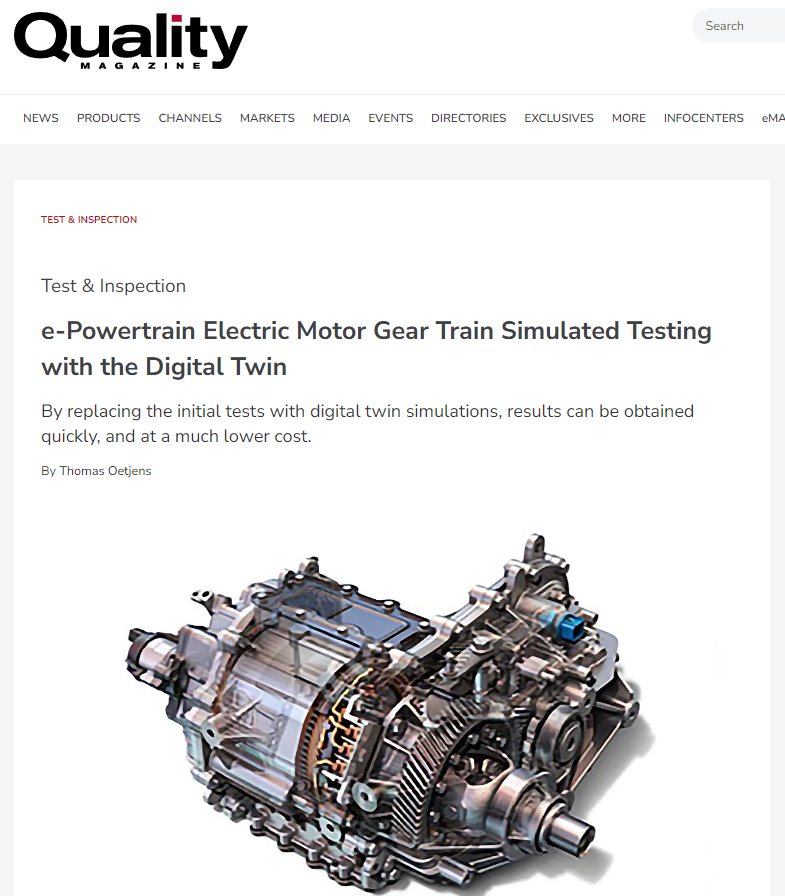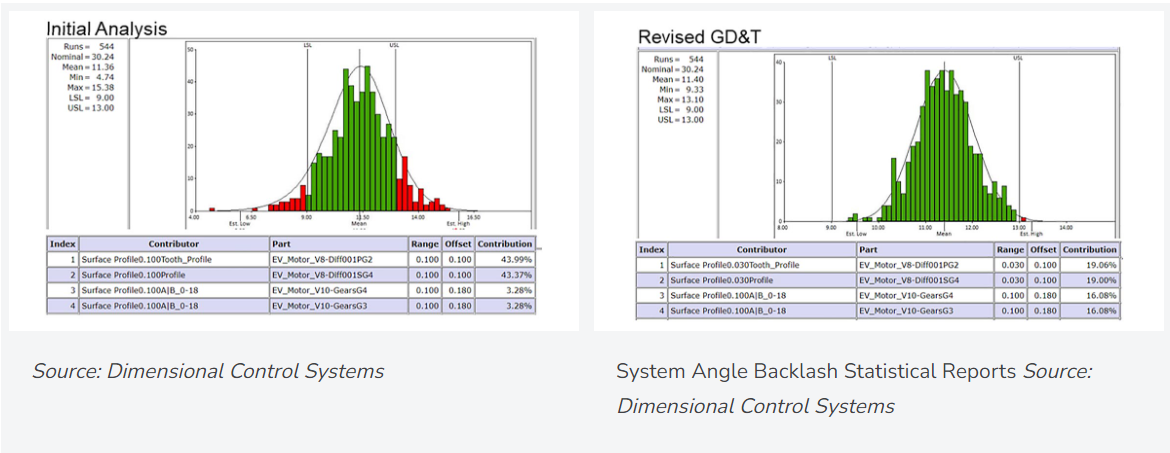
See on Quality Magazine https://www.qualitymag.com/articles/97541-e-powertrain-electric-motor-gear-train-simulated-testing-with-the-digital-twin
The performance of an electric vehicle power unit is directly connected with critical tolerances. Tolerances drive opportunities for performance enhancement with cost reduction. The tests normally used to determine and validate tolerances are both expensive and time-consuming with prototype parts. By replacing the initial tests with digital twin simulations, results can be obtained quickly, and at a much lower cost. This article discusses one of these tests and the results.
This upfront simulation method illustrates the use of digital technology to create a parametric family of designs with statistical tolerances as the parameter. The result: a digital validation of the design variation to reduce prototype builds or solve build issues while increasing innovation.
Once an adjustable statistical tolerance has been established, the tolerances can be split into the individual components. For example, in the concept design phase, the bearing may represent the combination of the gear grade, bearing specifications, and the housing specifications. Dividing the tolerance up using statistical cost analysis can balance the design tolerances at the lowest cost.
Gear micro geometry in the form of gear crowning, gear backlash, or tooth clearance is another example of the method. Adjusting the tolerance as a parameter provides the geometric information to ensure the gear system backlash meets the required specifications.

https://www.qualitymag.com/articles/97541-e-powertrain-electric-motor-gear-train-simulated-testing-with-the-digital-twin
These Stories on CATIA
No Comments Yet
Let us know what you think